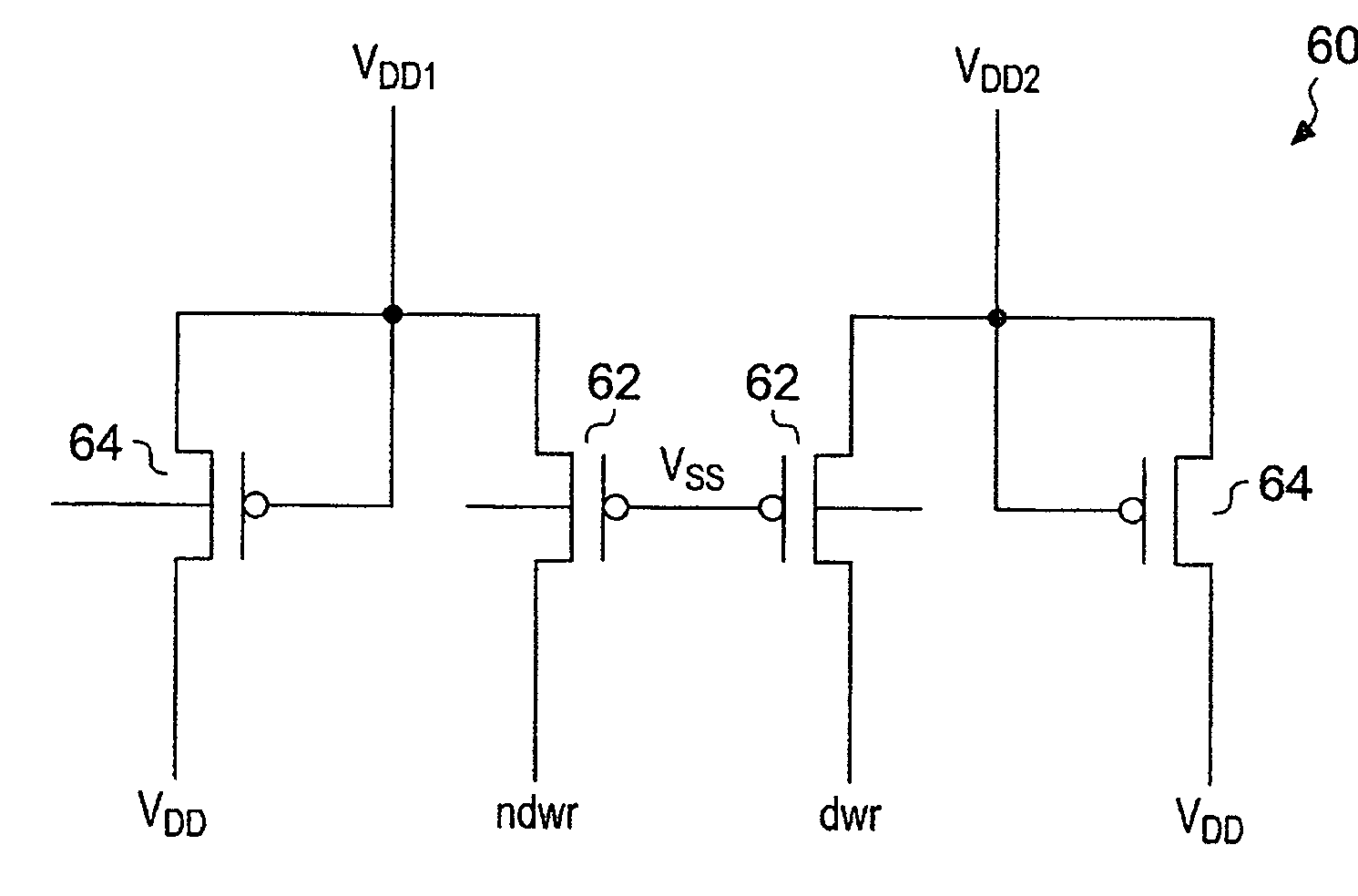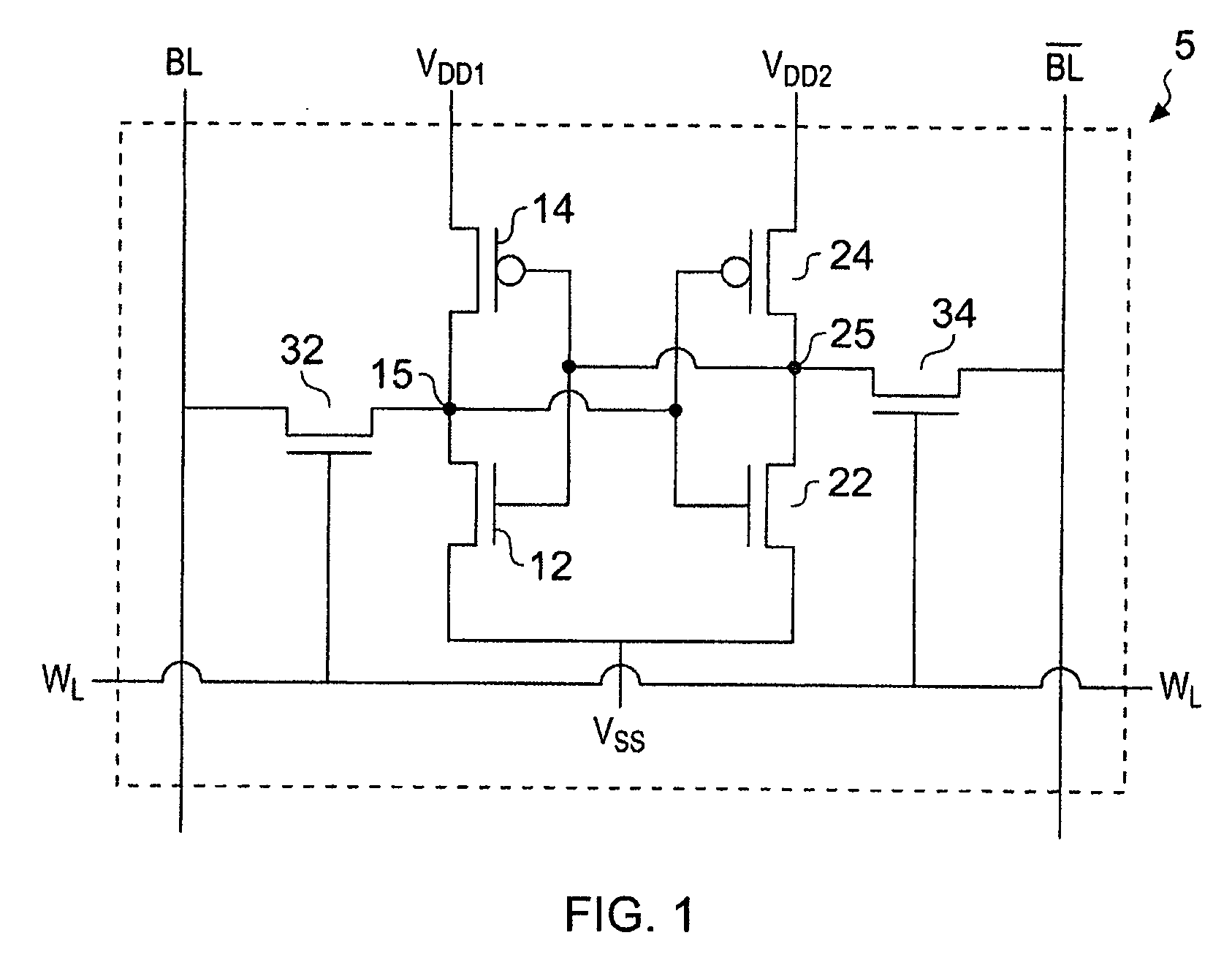Controlling power supply to memory cells
a technology of memory cells and power supply, applied in the field of data processing, can solve problems such as the inability to consistently write data values to the cell, and achieve the effect of efficient and effective wri
- Summary
- Abstract
- Description
- Claims
- Application Information
AI Technical Summary
Benefits of technology
Problems solved by technology
Method used
Image
Examples
Embodiment Construction
[0046]FIG. 1 illustrates a memory cell 5 according to an embodiment of the present invention. The memory cell 5 comprises a pair of cross-coupled inverters formed by transistors 12, 14, 22 and 24. Transistors 12 and 14 form a first device which is powered by VDD 1 while transistors 22 and 24 form a second device powered by VDD 2. These two devices have a common low voltage rail VSS.
[0047]The memory cell further comprises bit lines BL and a word line WL. The word line is connected to the gates of two access transistors 32 and 34 which when switched on by a signal on this word line provide a path between an input / output portion 15, 25 of the devices and the bit lines. Thus, under control of the word line the devices can be placed in data communication with the bit lines and data can be read in or written out from these devices.
[0048]As the two devices are a cross coupled pair if device 1, transistors 12 and 14 has a 1 at input / output port 15 then second device transistors 22, 24 will ...
PUM
 Login to View More
Login to View More Abstract
Description
Claims
Application Information
 Login to View More
Login to View More - R&D
- Intellectual Property
- Life Sciences
- Materials
- Tech Scout
- Unparalleled Data Quality
- Higher Quality Content
- 60% Fewer Hallucinations
Browse by: Latest US Patents, China's latest patents, Technical Efficacy Thesaurus, Application Domain, Technology Topic, Popular Technical Reports.
© 2025 PatSnap. All rights reserved.Legal|Privacy policy|Modern Slavery Act Transparency Statement|Sitemap|About US| Contact US: help@patsnap.com



